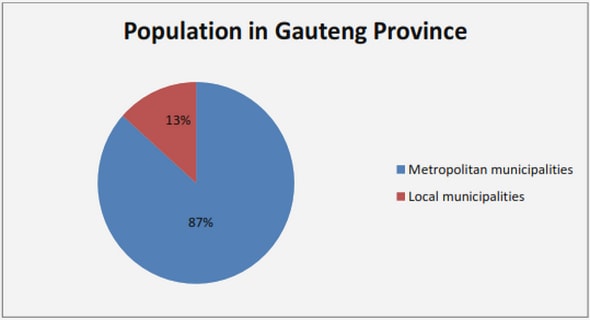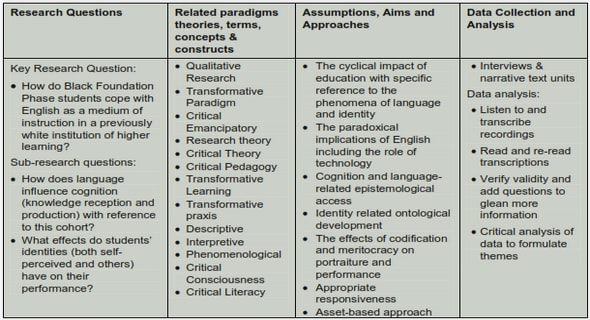Get Complete Project Material File(s) Now! »
Instruments of Analysis
Data resulting from the survey was analyzed through a statistical computer program, Statistical Package for the Social Science (SPSS). The first step, to be capable of evaluating the results in SPSS, was to give each questionnaire identification number from 1-119. The respondents were divided into four groups; group 1 represented the condition Lidl with Fairtrade, and their questionnaires were given the number 1-30. The second group represented Lidl, with questionnaires numbered 31-60, the third group represented ICA with Fairtrade with questionnaires 61-89 and the fourth and last group was ICA with questionnaires 90-119. First, all data was recorded in an Excel spreadsheet and then transferred to SPSS where each question was renamed into the variable it measured.
A check was made for outliers to ensure the data was transferred correctly. In the first step of analyzing the data set descriptive, frequency and exploratory tools were used to gain the first knowledge of the sample. Since recipients already had been chosen according to the right age and income group, the only two categorical variables checked through frequency was the distribution of men and women and whether or not recipients were customers at the specific store in the questionnaire. The graphing tool was then used to easier control the difference between men and women; defining the groups by sex and then looking at the number being a customer at the different stores. With the aim to reduce the data set into a manageable number of components (factors), the authors made use of factor analysis (FA) through principal component analysis (PCA). Although FA and PCA are not the same (Jolliffe, 2002), based on different mathematical backgrounds, the two often produce similar results.
The PCA was chosen since it is both more frequently used and more easier applied (Velicer & Jackson, 1990). As a pre-step Kaiser-Mayer-Olkin (KMO) measure of sampling adequacy and Bartletts test for sphericity was done, controlling that the PCA/FA could be used as an appropriate method. To control for multicollinearity the authors made use of the correlation matrix, both controlling for correlations above 0.9 and for significance levels lower than 0.05. The questions on whether price level was important were found to have a significance above 0.05 on a majority of the questions and was therefore deleted in the continued analysis. The KMO showed to be 0.908, with Kaisers criterion, which signified that values above 0.9 are excellent, demonstrating that the patterns of correlations were relatively compact. The Bartlett‟s test showed to be lower than 0.05 i.e. the correlation matrix was not an identity matrix.
The components produced by the PCA where kept on the basis of the Kaiser criterion of having Eigen values above 1, and controlled with a Scree plot. Though the Scree plot produced a break already after the three factors (appendix 6) and the Kaiser criterion kept six factors, all factors were kept on the basis of the Kaiser criterion and that the variables in each factor made logical sense. To ease interpretation, first, factors which could explain less than 0.3 of variance in the components was suppressed, resulting in a numerous cross loadings i.e. one variable influencing more than one component. Suppressing of values was instead set at the strict cut of point 0.4 (Ahmed & Salas 2008), giving a more easily interpretable result (appendix 4). Cross loadings was noted in seven cases, however, neither case invalidated the research. According to Straub, Boudreau, and Gefen (2004), only loadings above 0.5 should be considered, and furthermore, only cross loadings from
Fairtrade – a fair trademark for ICA and Lidl? Appelqvist, Harplinger, and Kindqvist variables loading higher on other components than on the component it theoretically should measure should be considered as not validating the construct (Galetta, 2005).
Varimax rotation was used to decrease the number of variables in the factors with high loadings. The 6 components became 8 groups. Group 1, 2 & 3 consisted of questions measuring attitude towards the Ad (1a, b, c & 2a, b, c & 1a, b, c 2a, b, c). Group 4 & 5 included questions relating to attitude towards the brand (3a, b, c & 3a, b, c, 5b, 6a, 6b). Group 6 was questions regarding items building up the attitude towards the ad (4a-g), group 7 measured the brand trust concerning questions relating to Fairtrade (8a, b) and group 8 consisted of questions on consumer preferences relating to Fairtrade (7b, c). Group 3 & 4, not being assessed from the components matrix, were bundled to ease interpretation on the effects of attitude towards the ad and attitude towards the brand. To control components before conduction analysis of variance (ANOVA) two tests were made. A reliability test with the Cronbach alpha was used, accepting components with alpha coefficient above 0.7(Bland & Altman, 2001).”Coefficient alpha is useful for estimating reliability in a particular case: when item-specific variance in an unidimensional test is of interest” (Cortina, 1993 pp.103). Coefficient alpha signifies the covariance which is the change in one variable associated with a change in another variable (Burns & Bush, 1999).
In the correlation range from -1 to +1, the number indicates the strength between variables and the sign determine the direction. 1 indicates that the value of one variable exactly determine the value of another variable. This test was conducted in order to evaluate the correlation between the questions and whether the researchers can view them on the same basis. In one case where the numbers of questions were only two, Pearson correlation coefficient was instead used with the same goal of determining if it was appropriate to bundle these questions together and evaluate them equally. Before the ANOVA could be conducted the factors with Cronbach alpha coefficients above 0.7 where bundled into scaled mean measures.
The Pearson correlation coefficient with a value above 0.5 is regarded to have a strong relationship between its variables. This is further used to evaluate internal consistency and will be further discussed in section 3.4. Second, the authors controlled the ANOVA assumption of equal variance through the usage of Levene‟s test. This was done through individual sample t-tests of each component. To make the t-test possible, only allowing 2 groups at the time, the authors divided the test sequence in two, first controlling the two groups of Lidl and then the same for ICA. The ANOVA was conducted through planned comparison which is appropriate as the authors wanted to compare the variance between means between groups. The alternative would have been to conduct the same analysis through a Post-hoc test (or possible numerous t-tests) including Tukey for determining which pair within the groups differed and Games Howell, assuming that the population variances and sample sizes to be equal.
However, as the authors wanted to specify which groups to be measured against each other, the planned comparison was chosen. Added to the table produced through planned comparison was F-value, calculated from the t-value. Factors affecting the power of the above mentioned tests include level of significance, sample size, and the effect size. Cohen‟s definition of effect size is the „degrees to which a phenomenon exists‟ (Cohen, 1965, p.9) where 0.25 determines a small relationship, 0.5 medium, and 1 a large relationship between variables (Hinkle, Wiersma & Jurs, 1998). In addition, a test to control if variables affected each other, linear regression was used in two cases. 1) Measuring whether attitude towards the ad predicted attitude towards the brand and 2) measuring whether brand believability predicted attitude towards the brand.
1 Introduction
1.1 Background
1.2 ICA – A Company Overview
1.3 Lidl – A Company Overview
1.4 Problem Area
1.5 Purpose
1.6 Perspective
1.7 Delimitations
1.8 Definitions
1.9 Disposition .
2 Frame of Reference
2.1 Choice of Theory
2.2 Brand
2.2.1 Brand Credibility
2.2.2 Brand Image .
2.2.3 Brand Attitude
2.3 Brand Attitude Change
2.3.1 Cognitive Consistency
2.3.1.1 Balance Theory
2.3.1.2 Brand Image and Consumer’s Self-image
2.3.1.3 Cognitive Dissonance
2.3.2 Elaboration Likelihood – Model .
2.3.3 Congruity Theory
2.3.4 Attitude Towards the Ad Model
2.4 Hypotheses in Relation to Research Questions
3 Method
3.1 Research Approach .
3.1.1 Deductive and Inductive Research
3.1.2 Explanatory, Exploratory, and Descriptive Method
3.1.3 Mixed Methods Sequential Explanatory Design
3.2 Data Collectio
3.2.1 Experiment
3.2.1.1 Samplin
3.2.1.2 Manipulation .
3.2.1.3 Questionnaire Design
3.2.1.4 Pilot Study .
3.2.2 Interviews
3.3 Data Analysis
3.3.1 Instruments of Analysis
3.3.1.1 Result from Levene’s Test
3.4 Data Quality
3.4.1 Validit
3.4.2 Reliability
3.4.3 Generalizability
4 Empirical Findings
4.1 Empirical Findings from Experiment .
4.2 Empirical Findings from Interviews
4.2.1 Hypothesis 4: Congruity
5 Analysis
5.1 Analysis of Experiment
5.2 Analysis of Interviews
6 Conclusion
7 Discussion .
7.1 Critique of Study and Method
7.2 Further Research
8 References
Appendices
GET THE COMPLETE PROJECT
Fairtrade – a fair trademark for ICA and Lidl?

